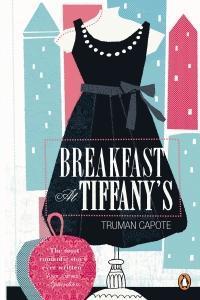“I am always drawn back to places where I have lived, the houses and their neighborhoods. For instance, there is a brownstone in the East Seventies where, during the early years of the war, I had my first New York apartment.”
The inspiration for the famous ’60s Audrey Hepburn film. Breakfast at Tiffany’s is one of Truman Capote’s best-known works, first published in 1958. It was his first novella and his fourth major book overall. Although a short story, it has had a significant role throughout media history.
Adapted into two plays, a musical, and a movie, it’s an immortalisation of New York socialites both during and after World War Two. The central character, Holly Golightly, has been attributed to a wide mix of women, including Marilyn Monroe, Suzy Parker, and Dorian Leigh.
Summary
The story is set in 1943 when the unnamed narrator first meets his neighbour, Holly Golightly. A somewhat wacky and dramatic character, she’s a country girl turned socialite. The narrator finds her life interesting as she flits from wealthy businessmen to famous actors. She spends her life in the cagé society scene, living off of the money and presents these men give her. Romantic and free-spirited, she longs for a place to call her own, and our narrator is unwittingly brought along for the ride.
Commentary
Breakfast at Tiffany’s is a witty energetic novel that fully captures the ‘American Geisha’ of the mid-twentieth century.
Holly Golightly is a brilliantly written character. She’s stylish and beautiful but smarter than she lets on. She draws attention wherever she goes but remains lonely and lost. She’s a very likeable character, comical and unconventional, and you can’t help but fall in love with her. There are mystery and plot twists in every character. Holly isn’t all that she appears to be, and her story slowly begins to unravel. Despite this, at the end of the novel, the reader is still left with numerous questions. It causes intrigue and confusion and easily captivates you from the first page.
The words seem to just flow off the page. It’s difficult to describe just what exactly makes this book so popular, but the style of writing is definitely a big factor. The sentences carry on one after the other in an easy-to-read manner that draws the reader even further into the story. However, there’s no actual plot to Breakfast at Tiffany’s. The unnamed narrator obsesses over Holly and informs the reader about different things that happen to her, but that’s it. Nothing really happens and there’s not much else to focus on.
The entire novel is sexist, through little fault of the author. New York in the 1940s was one of the most advanced cities in the world, but it would be another twenty-five years before women of all skin colour could vote. Every male character treats Holly as an object throughout this novel. Even though she uses that to her advantage, it still doesn’t disparage the fact every single male character shows sexism. It’s also incredibly racist and this time, it is the author’s fault. Characters casually throw around racial slurs and derogatory names. Even Holly herself is a bigot, claiming to be a good person for not outwardly showing racism.
Recommendations
Overall, I’d give Truman Capote’s Breakfast at Tiffany’s two out of five stars. Although it has its comical scenes, it is, in the end, a plotless story full of racism and sexism at every corner. I’d recommend this novel for lovers of the ‘café society’ of the twentieth century. It’s a restless era with larger-than-life characters, but unless you have an interest in this time period, it’s not worth reading.

Want to read it for yourself? You can find it in:
Prefer to listen to it instead? You can find it on:
Find me on Goodreads or StoryGraph!
